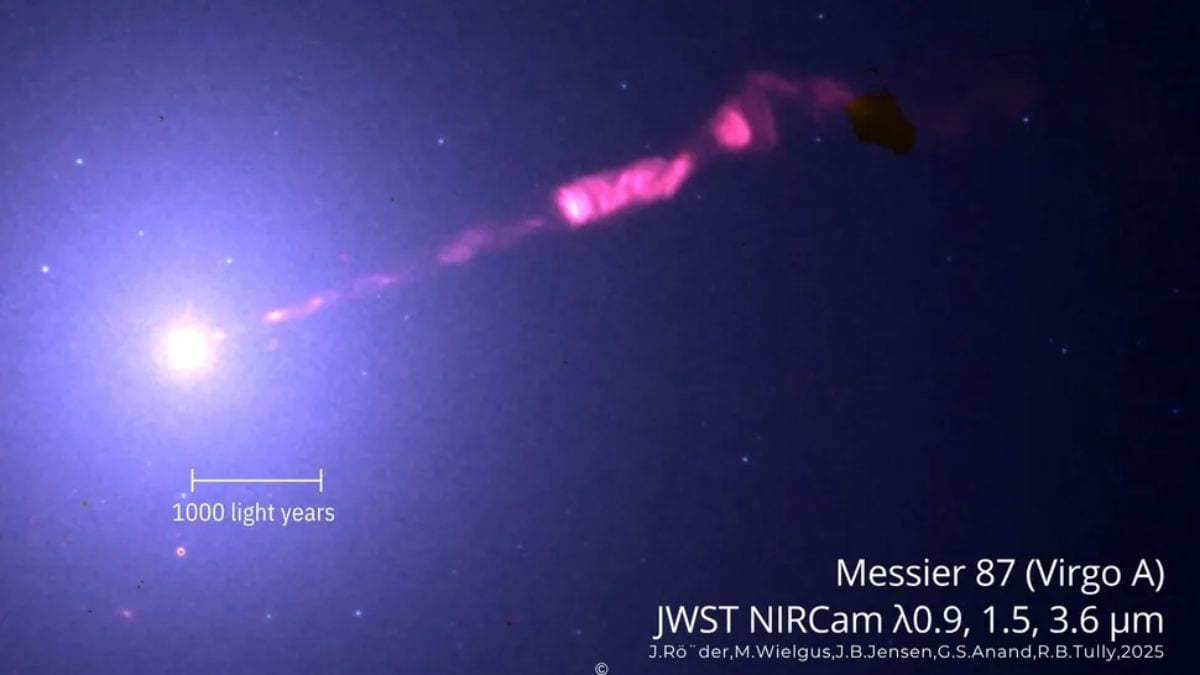Recent images captured by the James Webb Space Telescope (JWST) are the clearest ever pictures of the jet arriving from the massive black hole in the galaxy named Messier 87 (M87). There are clear details in the image shot by the telescope, which show the change of brightness, shape and the jet that is usually in disguise. As per scientists, this discovery will help them learn how black holes send out such powerful jets, while also explaining the way they affect the galaxies near them.
M87 Black Hole
According to Space.com, the first direct photo of the M87 black hole has fascinated scientists from the outset. This new JWST image resembles a pink ribbon on a purple backdrop, spanning thousands of light-years. Bright spots appear along the jet where particles are speeding up.
NIRCam of the telescope also found a very small second jet that is going in the reverse direction, a few are around 6,000 light-years of distance from the blackhole. It is usually hard to observe as it is dimmer, but there is a sharp view with Webb. It precisely removes the background light sources, and the scientists have been able to spot it.
Closer to the black hole, the jet looks twisted, like a spiral. A region called HST-1 breaks into two smaller parts, each with different brightness, showing that shock waves and complex movements happen near the black hole. Another slower part, called “knot L,” also shows up, proving the jet has many layers of activity.
Findings
The study shows that the jet's light mostly comes from synchrotron radiation, this happens when charged particles spin around magnetic fields. By looking at the small colour changes in the jet, scientists can see how particles speed up, cool down, and twist. These details reveal how black holes control their environment.

Comments
Post a Comment